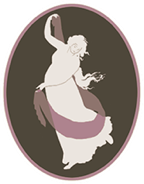

Home Page About Us Emma’s Unsung Achievements Portraits of Emma Shoebox

Emma’s Incredible Story
Emma, originally called Emy or Amy, was born on 26th April 1765 in the poor mining village of Ness, near Neston in Cheshire to Mary and Henry Lyon, the colliery blacksmith. She was baptised on 12th May 1765 with the name Emy Lyon. Emy was likely a misspelling of Amy, as Emma was known as Amy in her youth. Her father died shortly after her birth. On 26th April 2015, Burton and Neston History Society, in association with The 1805 Club and Neston Town Council, celebrated the 250th anniversary of Emma's birth by commissioning an anvil memorial to stand near the house in which she was born.
IMPOVERISHED CHILDHOOD IN NORTH EAST WALES

Her widowed mother Mary (pictured left) took baby Amy to live with her mother, Sarah Kidd, in the village of Hawarden in Flintshire, north-east Wales, where Mary's father Thomas Kidd had worked as a collier until his death in 1761, four years before Amy's birth. The Kidds had likely emigrated from Lancashire as Amy/Emma, for all her life, never shook this accent off. The extended family lived in a small thatched cottage between a chemists and the Fox and Grapes pub. Thomas's death had left the family in dire poverty. Amy's grandmother, Sarah worked as a carter and her mother, Mary, took work as a seamstress then moved to London. Amy started work at thirteen in the family home of the Hawarden physician, Dr Thomas.
Amy moved to the brighter lights of London in the autumn of 1777 and found work as a maid for the Budds, another doctor's family, in their townhouse near Blackfriars Bridge. She shared a room with a fellow maid, famous-actress-to-be Jane Powell. Amy, like many 18th century maids, was soon sacked by her mistress, Mrs Budd, and turfed out onto the streets.

A CELESTIAL GODDESS IN THE TEMPLE OF HEALTH
Amy found work as a classically dressed dancer – a celestial goddess – at Dr James Graham's Temple of Health in Westminster, London, where Dr Graham claimed to cure the sexual problems of anyone who could afford his huge fees using, amongst other things, ultra-modern electric shocks administered in the Celestial Bed to cure infertility.
At the age of fourteen – still a child, according to present day values – Amy secured employment as a dancer in Madame Kelly's high class brothel in Arlington Street, Piccadilly. The brothel was so high profile that new employees were advertised in the Town and Country Magazine – which duly published a portrait of “Miss Lyon”. Employment here was a ticket to finding a rich protector.
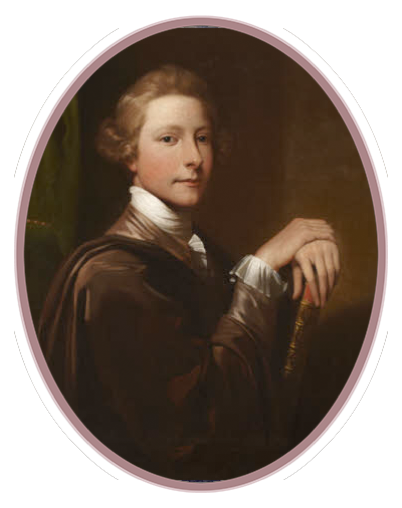
MISTRESS TO SIR HARRY FETHERSTONHAUGH IN UPPARK, SUSSEX
In 1781, twenty-six-year old Sir Harry Fetherstonhaugh (pronounced FAN-shaw) hired sixteen-year-old Amy from Madame Kelly as a mistress and moved her into his country house of Uppark on the South Downs. He gave her her own suite of rooms – a complete luxury for Amy, who'd likely never had a room to herself before. Sir Harry, an only child, loved to lavish money on serious partying. Amy learnt to ride accompanying him and his guests on hunting parties. When he moved to London for the winter season, he took her with him as permanent mistress.
Amy became pregnant. When she told Sir Harry in the autumn of 1781, he disowned her. Eighteenth century society viewed unmarried mothers harshly and ones without money faced a grim future. Pregnant Amy was in a very tight spot.
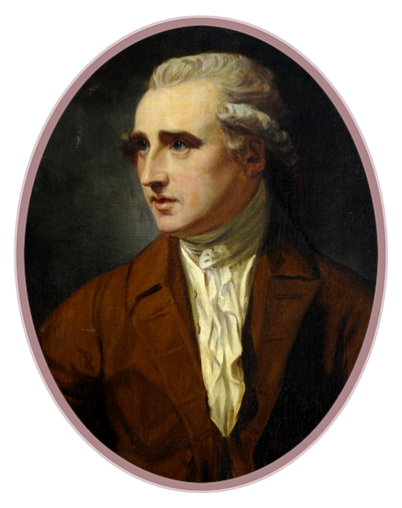
RENAMED BY CHARLES GREVILLE AND PAINTED BY ROMNEY
Amy wrote in desperation to one of Sir Harry's quieter associates, Charles Greville, whom she had met at Uppark. Greville said he would take her in, with her mother, on condition that she repented her wild ways; saw no one else and learned to be a pure, meek & virtuous woman. Amy agreed and he installed her and her mother in a rural house in Paddington Green. On his instruction, she changed her name to Emma Hart. Her mother, at around the same time, assumed the name of Mrs Cadogan. No record has been found of her having remarried. Greville kept Emma in social isolation, but was happy for an artist he patronised, George Romney, to use her as a sitter. Romney loved painting Emma and they developed an affectionate father-daughter relationship.
Greville didn't want Emma's daughter, "Little Emma", around after she was born in 1782 and she was sent to live first with Emma's grandmother, Sarah Kidd, and then foster parents, the Blackburns, in Manchester. Emma tried and failed to persuade Greville to allow Little Emma to come and live with them in Paddington Green. You can read Jacqui Livesy's account of the life of Little Emma, Finding the Lost Daughter of Lady Hamilton, on the British Naval History site here.
ROMNEY'S PORTRAITS MAKE EMMA A STAR
George Romney found his muse in Emma and painted over sixty portraits of her. Unlike stiffly behaved society ladies, she was happy to try daring poses and experiment with classically inspired draped clothing. Portraits were the social media of the day and the wealthy classes flocked to Romney's studios to see her image. Printed line drawings of Romney's Emma portraits sold like hot cakes. Although Emma had fallen in love with Greville and tried wholeheartedly to fit his humble mould, he strongly disliked her being in the limelight and sought to pass her on as a mistress to his ageing, widowed uncle, Sir William Hamilton, British Ambassador to Naples, hoping to kill two birds with one stone by both getting shot of Emma and preventing his childless uncle remarrying and disinheriting him.
Sir William Hamilton had met and become fond of Emma on a visit to London in 1784, but was aware she was in love with Greville and reluctant to take her on as a mistress. Greville eventually persuaded him to take her for a trial period and – lying to Emma he was treating her to a holiday – packed her and her mother off to Naples in the spring of 1786.
FOBBED OFF TO NAPLES
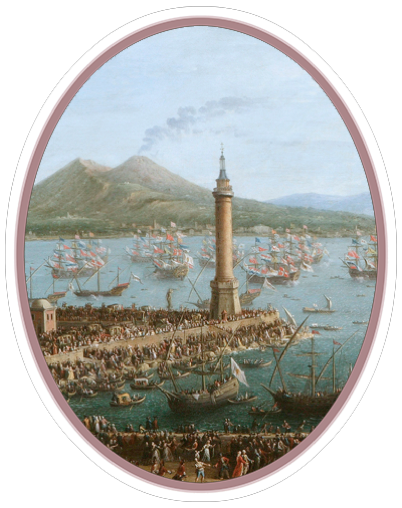
On her 21st birthday, 26th April 1786, Emma arrived in Naples with her mother, unaware that Greville intended to pass her on to his uncle as a lover, believing instead that they were there for a holiday. Sir William Hamilton, aware that Emma loved Greville, treated her respectfully as an honoured guest, giving her four rooms in his main residence as well as a coach and horses. As British Ambassador, Sir William moved in the top circles and kept her social calendar full. Her life was now vastly richer than in Greville's deliberately cut off Paddington Green house. 18th century Naples was Europe's third largest city and, with its view of erupting Mount Vesuvius, it was an exciting and cosmopolitan place to be, but she missed Greville desperately and sent him many letters to which he only answered one.
Greville wrote to Emma in August brutally telling her that he wanted her to become Sir William's mistress. Emma was both furious and heartbroken, but as the months passed her affection for Sir William, who had demanded nothing from her, grew and they their relationship became intimate.
A CULTURED LIFE WITH SIR WILLIAM

Sir William Hamilton provided tutors for Emma, who had always been keen to learn, and she became fluent in Neapolitan Italian & French, proficient at the harp and mastered singing to such a high standard that the Royal Opera in Madrid invited her to sing for money. Sir William was an archaeologist and collector of antiquities. He was a leading expert on the recently discovered ruins of near by Pompeii. For wealthy British travellers taking their Grand Tour of Europe, Naples was a must-see destination and Sir William was treated as both host and guide. Sir William and Emma hosted dinner parties nearly every night for crowds of opulent guests where Emma was popular for her charm, wit and beauty.
Emma wanted Sir William Hamilton to marry her. She had grown to love him deeply and she knew that, in eighteenth century society, she would never gain full social acceptance as an unmarried mistress with no good family name and a colourful past. Sir William, however, was happy for things to carry on very pleasurably as they were and his family in England (especially Greville who angled to be Sir William's sole heir) were dead against the idea of him marrying her. There were though – as we’ll see – åpolitical advantages for Sir William if he agreed to the marriage.
THE BIRTH OF EMMA’S FAMOUS ATTITUDES
In the spring of 1787, Sir William Hamilton gathered his most distinguished guests to his best (and darkened room) for a surprise performance: Emma (who as a teenager had performed as a celestial goddess, high-class brothel dancer, model for Romney in classical drapes, as well as by then having lived amongst Sir Williams's large collection of classical antiques for a year) performed a suddenly illuminated mime show of emotive poses from well known Graeco-Roman classics. she rearranged her scarf expertly to create stunningly different personas. The audience was amazed. No one had seen anything like it before and they wanted more! Emma's Attitudes quickly became famed across Europe inspiring a fashion revolution.
Sir William Hamilton defied his family and convention by marrying Emma for love. ( and, arguably, diplomatic advantage). They travelled to England in 1791 and married quietly in St Marylebone Church on 6th September. They weren't quiet enough though to escape the press, which snapped up the story of common Emma, the Romney superstar, now doubly famed for her Attitudes marrying the sixty-year-old British Ambassador to Naples. Emma had come a long way from being plain Amy Lyon from Ness: she was now Emma, Lady Hamilton.
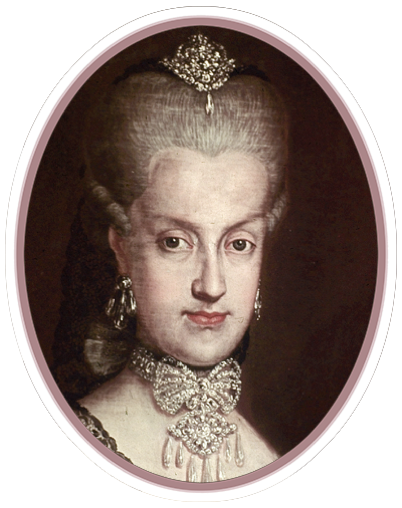
EMMA’S CLOSE FRIENDSHIP WITH THE QUEEN OF NAPLES
Now married to Sir William, Emma could be presented at court and, unlike Sir William, develop a relationship with the Queen Maria Carolina who, owing to her hunt-obsessed husband, King Ferdinand's disinterest in matters of state, was the acting political power of Naples, Europe's third largest city. From 1792 onwards, Emma became increasingly close to the Queen and Emma conspired to smuggle letters to King Ferdinand from his brother, King Charles of Spain, who wanted Naples to side with France. Emma acted as a spy courier by delivering these crucial letters to the British.
In 1793, the French revolutionary wars sparked anti-royalist unrest in Naples, which drove the Royal Family, of whom Queen Maria Carolina was the fretting sister of ill-fated Marie Antoinette, to retreat to their countryside residence at Caserta with the Hamiltons in tow. In September, a young Royal Navy officer, Horatio Nelson, serving aboard Agamemnon, was ordered to visit Naples to request aid from King Ferdinand against France, which was now at war with Britain. Emma and Sir William met Nelson for the first time and, having hit it off, stayed in friendly correspondence.
EMMA CRUCIAL TO NELSON'S NILE VICTORY
In 1798 Nelson, now commanding a fleet, had been thwarted stopping Napoleon entering Egypt because he didn't have enough supplies to make the journey and was refused them at the Neapolitan-ruled port of St Peter in Sicily. When Emma heard of this, she begged Queen Maria Carolina to order the supplies released. Nelson was then able to lead the British fleet to victory at the famous Battle of the Nile, which made him a hero. When he returned victorious to Naples, he was greeted by ecstatically cheering crowds and Emma swooned into his arms.
French inspired revolutionary unrest in Naples had escalated so severely by the winter of 1798 that Emma and Sir William urged the Royal Family to evacuate to Sicily in Nelson's ship Vanguard, believing it safer to sail the rough December seas than stay to face the mob. Sir William and the royal party fell prey to violent sea sickness and – with their servants incapacitated through fear of the stormy seas – Emma tirelessly nursed them for the arduous twelve-day crossing. Despite her best efforts, young Prince Carlo Alberto died in Emma's arms. She was devastated.
EMMA MADE A DAME OF MALTA
By the spring of 1799 Emma and Nelson had fallen in love. Nelson disobeyed a direct order from Lord Keith to return to the blockade of Malta against the French so as to be with Emma in Sicily. At his request, Emma was awarded the Maltese Cross by the Czar of Russia for sending grain to the starving, blockaded Maltese and donating money to the island's governor from her own purse (she was always generous to people in need). This was the first time the Maltese Cross had been awarded to an English woman. It gave her the title of Dame in her own right (she didn't have her own title of Lady, and was known as Emma, Lady Hamilton in acknowledgment of her husband, Sir William’s title).
Both Sir William and Nelson were recalled to England in 1800 and, as Lord Keith – angry at Nelson's disobedience – refused them a British ship for the journey, they set off overland, accompanied not just by Emma, but Queen Maria Carolina, three princesses, two princes and fifty royal retainers. Jubilant crowds thronged to meet them at every stop on their European journey. They parted ways with the royal party in Austria, the Queen's home country, and pressed on to England. The crowds still gathered for Nelson, but by the end of their journey feelings for Emma were less enthusiastic.
COLD RECEPTION IN ENGLAND AND THE BIRTH OF HORATIA
When their party arrived in England in 1800, Nelson was greeted by Nelson-mania, but Emma – the superstar of Europe and darling of the Neapolitan court – had a cooler reception. She tried to hide being heavily pregnant with twins and cartoonists, such as Gillray (left), had a field day portraying her as fat. Polite society sniggered at her working class accent and Queen Charlotte, the wife of King George III, refused her access to court. Nelson, promoted to Vice Admiral, was called back to duty on 17th January 1801. Emma was distraught. She and Nelson, anxious to hide her pregnancy from gossip mongers, wrote to each other in code. Emma discreetly gave birth to twins shortly after his departure. She sadly wrote to him that only one survived. Nelson wrote of his joy for the birth of his “friend, Thomson’s” daughter, Horatia.
Sir William and Emma stayed in London – with baby Horatia secretly lodged close by in the care of a paid nurse, Mrs Gibson. Although Sir William was by now aged seventy, of poor health and limited finances, Emma, aged just thirty six, still loved to party and host high society guests, of whom the Prince Regent was keen to join. He had a reputation as a womaniser and Nelson, on hearing that he planned to attend one of her dinner parties was frantically jealous He wrote to Emma and Sir William begging them to refuse the Prince, describing him as “without one spark of honour”.
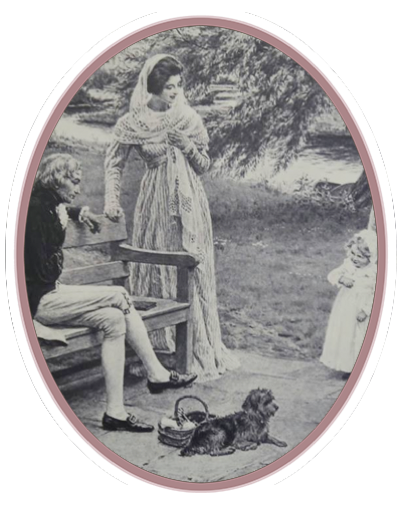
FAMILY PARADISE AT MERTON PLACE
Nelson, who was by now completely estranged from his wife, Frances, was keen to provide a home in which he, Horatia and Emma (plus her mother and Sir William) could be a family. He instructed Emma, during brief home leave, to seek out an affordable country property to buy on his behalf. Emma chose a run-down house with a bit of land in Surrey called Merton Place. Nelson, on shore leave, was delighted and called it Paradise Merton. He and Emma made enthusiastic plans to renovate and remodel the house and grounds. She decorated Merton lavishly with expensive tall mirrors, portraits of her and Nelson and a trove of high-fashion Nelson drapery, crockery and any other Nelson memorabilia to be had.
Emma and Sir William accompanied Nelson on a triumphal tour of England and Wales taking in Birmingham, Warwick, Gloucester, Swansea and Monmouth. They were met everywhere by cheering crowds – a far cry from the stony silence Emma had been subjected to by the English gentry!

EMMA'S FRIENDSHIP WITH NELSON'S FAMILY
Nelson's elderly father, Rev Edmund Nelson visited Merton for ten days in the winter of 1801, during which time Emma lavished him with hospitality. He passed away the following April in the City of Bath, where Nelson's youngest sister, Kitty (pictured left) was living with her husband, George Matcham and their brood of children. The Matchams got on well with Emma and livened up Merton with family visits. Emma also forged close friendships with Sarah, the wife of Nelson's older, clergyman brother, William, and also Nelson’s other sister, Susanna (married to a Norfolk farmer, Thomas Bolton).
Sir William Hamilton died on 6th April 1803 in his house in Picadilly, London. Both Emma and Nelson were with him. Despite their quite public affair, both Emma and Nelson had loved Sir William. The trio had declared themselves tria juncta in uno (the three united in one): a play on the motto of the Order of the Bath, of which both Nelson and Sir William had been members. Sir William had been like a father to Emma and her grief over his death was real.
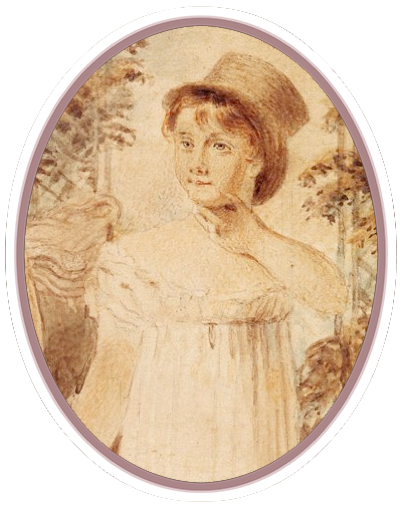
HORATIA
Emma felt finally able to move her and Nelson's four-year-old daughter, Horatia, – who had been living discretely with Mrs Gibson – to Merton Place in August 1805, although she and Nelson maintained the pretence that Horatia was the orphaned daughter of their friends, the Thomsons. Nelson was besotted by Horatia and wrote frequently from Victory, the ship he was now commanding, to enthuse of his love for her and Emma. He made several codicils to his will requesting that England provide for them both. In his final codicil, he decreed for Horatia to take his surname.
On 21st October 1805, Nelson lead the British fleet to a decisive victory against the combined French and Spanish fleets at Trafalgar, near the Spanish city of Cadiz. The victory at Trafalgar was so complete that no navy could compete with Britain for the next century and the British Empire was able to expand unchallenged to become the greatest power on Earth, but the victory also cost Nelson his life as he was fatally wounded at this ultimate moment of triumph. Nelson's body was reverently transported back home. It was several weeks before news of Nelson's death reached Emma at Merton.
EMMA’S COLLAPSE AFTER NELSON’S DEATH
On 6th November 1805, as church bells rang out for joy over the Trafalgar victory, Captain Whitby rode to Merton to break the news of Nelson's death to Emma. She collapsed, heartbroken and didn't leave her bed for weeks (and, in fact, arguably never recovering. She remained single for life).
Victory’s Captain, Hardy, took her some of Nelson's belongings and William Nelson – reluctantly – brought her the blood-stained coat he’d worn when he was shot.
In honour of Nelson's memory, William Nelson was made an Earl and his sisters, Kitty and Susanna, were given generous grants, but – despite Nelson's codicils requesting England provide for them – Emma and Horatia were ignored and Emma was barred from his funeral. Nelson, however, had left her Merton Place and a modest income (although it was unreliably paid to her by his inheriting brother, William. Now an Earl, he and his once friendly wife, Sarah turned their backs on Emma. She also had a small income bequeathed by Sir William, but this was administered with equal slackness by Greville. The Matchams and Boltons, however, remained actively supportive of Emma.
Although Emma could have lived modestly on the incomes bequeathed to her by Nelson and Sir William (had they been paid to her on time), she’d grown up in abject poverty and not learned how to manage a budget. To make matters worse, she’d earned fame being centre stage in high society and did not have it in her to fade gracefully into obscurity. She found solace in hosting lavish parties, with guests including the Royal Princes – and rapidly fell into ruinous debt.
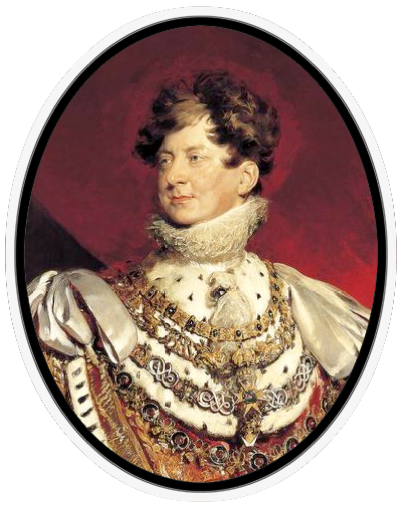
MONEY MATTERS
Another reason for keeping in with the Princes was that the Prince Regent (pictured left) would imminently become George IV and might sway the Government to grant her the financial support Nelson had requested. Emma repeatedly petitioned the Government brandishing Nelson's codicil and telling them of her vital role during the Napoleonic wars where she had acted as a spy courier and prompted the vital supply of provisions that Nelson had needed for his Nile victory, but her claims were ignored and dismissed as fanciful.
Creditors encroached and Emma was forced to put Merton up for sale. She was saved at the eleventh hour, in May 1808, by her neighbour, Abraham Goldsmit, who rallied a group of trustees and, later, the Duke of Queensferry who paid off her debts. But, still unable to budget, new debts escalated and she was forced to sell Merton in 1810, the same year in which her mother died.
Despite the best efforts of her friends, Emma's debts continued to mount and she was confined to a London debtor's prison with Horatia in 1813. Both the Matchams and Boltons sent her food and other friends – James Perry, who later became Editor of the Chronicle, and Joshuah Smith, Alderman of London – helped raise money to bail her out, but she was soon reinterred.
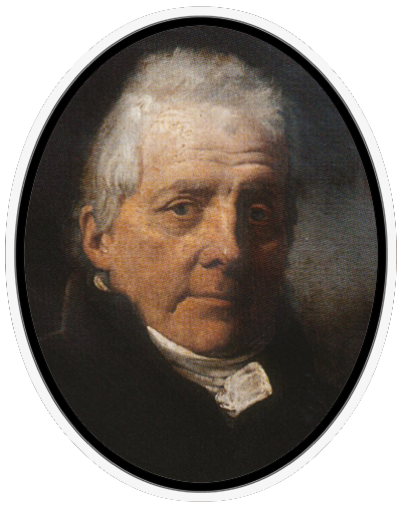
EMMA’S LAST DAYS
In 1814, Napoleon abdicated and George Matcham (pictured left) invited Emma to emigrate to now war-free France with his family, but her debtors were closing in on her faster than the Matchams planned to move and, to make things worse, she was cruelly hit a devastating final blow when James Harrison published a batch of her and Nelson's letters in which Nelson had described the Prince Regent as a villain and unprincipled liar. This dashed all Emma's hopes for ever being supported by him. She managed to beg enough money to escape debtor's prison again and fled to Calais in northern France with Horatia in June 1814. Emma was by now seriously ill with jaundice and she died there in a rented room, with thirteen-year-old Horatia by her side, on 15th January 1815.